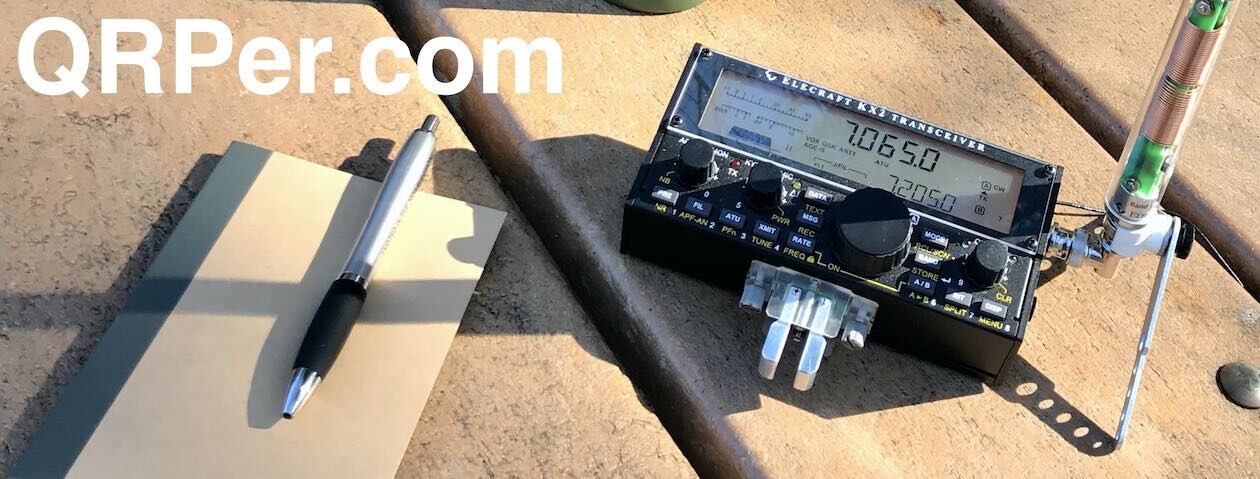 As I mentioned in a previous post, if all goes according to plan (and we never take that for granted anymore) our family is plotting an extended road trip into Canada this summer. We’ve got most things lined up: a brilliant house sitter, an home base in Québec, a doggy “summer camp” for Hazel (my kind father-in-law), and, oh yes, a list of parks and summits I hope to activate.
As I mentioned in a previous post, if all goes according to plan (and we never take that for granted anymore) our family is plotting an extended road trip into Canada this summer. We’ve got most things lined up: a brilliant house sitter, an home base in Québec, a doggy “summer camp” for Hazel (my kind father-in-law), and, oh yes, a list of parks and summits I hope to activate.
What I’m still sorting out is the radio gear.
Let me be the first to admit that I’m blessed with a number of field radios (so be warned: this is going to sound very much like a first world problem) and there are aspects of each one that I appreciate. On a road trip like this, though, space will be at a premium. I can really only justify two compact HF radios and their associated accessories. I plan to bring at least one of my Bioenno 3Ah 12V batteries and charger as well.
Fortunately, I can take a few antennas. We have a roof top Thule cargo box that is actually perfect for my CHA MPAS 2.0, MPAS Lite, and TDL–they’ll fit on the floor of the box and essentially take up no room in it. Otherwise, the cargo box will be dedicated to all of our bulky camping gear.
My HF radios will have to fit in the car trunk/boot along with food, clothes and other supplies.
I already made a decision about one of the radios that will come with me. In fact, it was a bit of a no-brainer:
The Elecraft KX2

I’ve taken the KX2 on all of my major road trips since 2016. It’s incredibly compact, feature-rich, and can handle any situation I throw at it.
In fact, as with two previous years in Québec, I’ll use it to do a little shortwave radio listening (always an important aspect of my travels) and record the BBC Midwinter Broadcast to Antarctica.
 Indeed, recording this particular broadcast has become an annual event over at the SWLing Post. It’s one of the highlights of my summer and always falls on my birthday.
Indeed, recording this particular broadcast has become an annual event over at the SWLing Post. It’s one of the highlights of my summer and always falls on my birthday.
The other thing about the KX2 is since it has an internal ATU, I can pair it with any antenna: resonant or not. If the need arises, I can also build an antenna from speaker wire, computer/phone cable, or pretty much anything that conducts.

And, of course, if I pair the KX2 with my low-profile AX1 antenna, I can operate anywhere. I do have a number of urban parks in Ottawa and Québec City that I plan to operate super low-profile and on foot.
The KX2 batteries require that I bring the rapid battery charger and that does take up a little more space (almost the same amount of space as the radio itself!).
As for a second radio…
I think I can get away with packing one more radio. That way, in the unlikely even I have an issue with the KX2, I would have a backup. Plus…hey…variety, right?
I don’t have the room to take my Mission RGO One, Icom IC-703 Plus, or Ten-Tec Argonaut.
 I’ve even excluded the KX3 from the list because it wouldn’t offer me much more than the KX2 (just 160 & 6 meters, plus a little extra power output if needed it). The radio I choose needs to be one of my more compact, lightweight, and efficient models.
I’ve even excluded the KX3 from the list because it wouldn’t offer me much more than the KX2 (just 160 & 6 meters, plus a little extra power output if needed it). The radio I choose needs to be one of my more compact, lightweight, and efficient models.

I’ve also left out the QCX-Mini because I want more than a mono band radio.
Hmmm…then again, the QCX-Mini is so extremely small, I could throw it in my glove compartment and no one would be the wiser [shhhh…let’s keep this between us, shall we?].
Here’s a quick run-down of some of the radios I’m considering and why: Continue reading Choosing the right QRP radios for an extended road trip →
 Looking back at last year (2021), if I had to pick out one of the easiest SOTA activations I made, Mount Jefferson would be near the top of the list. It’s a very accessible summit although not technically a “drive-up” summit because you will need to walk a short distance up a service road to the activation zone (AZ).
Looking back at last year (2021), if I had to pick out one of the easiest SOTA activations I made, Mount Jefferson would be near the top of the list. It’s a very accessible summit although not technically a “drive-up” summit because you will need to walk a short distance up a service road to the activation zone (AZ). The drive to Mount Jefferson took all of 20 minutes which was a good thing because our family had other activities in store that day including some extended hikes!
The drive to Mount Jefferson took all of 20 minutes which was a good thing because our family had other activities in store that day including some extended hikes!
































